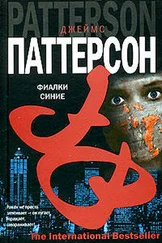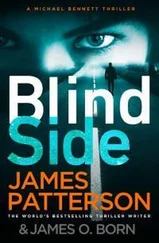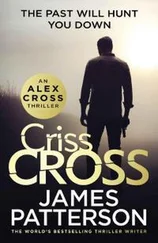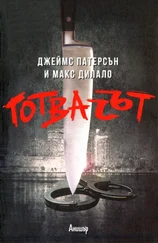“Mall in front of the National Sculpture Museum,” she said. “Constitution Gardens Pond. Korean War Memorial. Union Station. Washington Monument.”
“False alarm there,” I said.
“It doesn’t matter,” she said, before stabbing her finger at the map. “Air and Space Museum.”
“I’m predicting a false alarm there as well.”
“Like I said, it doesn’t matter if bombs were there or not.”
Ignoring the soft pounding at the back of my skull, I said, “Okay.”
“What do they have in common?”
“They’re all in and around the Mall?”
Reaching into her raincoat pocket again, she came up with a Metro transit map.
“They’re also all on this city bus route that started up in 2015,” she said. “The DC Circulator. It starts at Union Station and goes all around the monuments with stops that line up with the bombing sites.”
Instantly alert, I sat forward and studied the transit map.
“See?” Kate said. “I’m telling you, Dr. Cross. Your bomber rides that bus.”
Two days passed without a call from the bomber.
The deadline for the veterans’ appropriations bill loomed, with no sign that the IEDs on the National Mall were having an effect on Congressional gridlock. Senators on both sides of the aisle continued to maintain their support of veterans yet fight every effort to get the spending bill to the President’s desk.
I’d told Mahoney and Bree about Kate Williams’s theory that the bomber was using the DC Circulator, and they’d given it enough credence to have agents and detectives interview the route’s drivers.
None of the drivers had noticed anything out of the ordinary. Then again, it was cherry blossom season. Even with the bombings and the threats, the Circulator continued to be packed with tourists.
In a meeting at FBI headquarters that Wednesday morning, Mahoney typed on his laptop, and said, “My agent missed it the first two times through, but he may have found something in the security video shot inside Union Station the night before the explosion. Look for the garbage can at center right.”
The screen at the far end of the conference room lit and showed forty, maybe fifty people walking on platform four alongside an Amtrak train. The garbage can was blocked from view as passengers moved toward the last few cars.
“Any one of them could have planted it,” Bree said when the footage stopped with the platform clear. “And there had to be other trains that used that platform earlier.”
Mahoney said, “True, but watch the sequence again.”
He backed the video up twenty-five seconds, saying, “Look for the one in the black hoodie carrying the book bag.”
Bree and I studied the crowd, seeing several weary men and women in business suits, K Street — types working late, carrying briefcases and trudging along. Behind them walked a person of medium build, likely a male, wearing a black hoodie that was up, casting the face in shadows. His shoulders were hunched forward, his head down and turned, as if he knew the position of the cameras.
“Watch for the moment John Doe and the people in front and behind him go by the trash receptacle,” Mahoney said.
It took them no more than two seconds to go by the trash bag, and I didn’t catch what Mahoney was talking about. But Bree did.
“We can’t see his left arm, but his shoulder moved, and there was a flash of yellow near the mouth of the trash can.”
“Exactly,” Mahoney said. He backed it up, froze the tape on that moment, and magnified the screen so we could see exactly what was being junked.
“Popeye’s chicken?” I said.
“A take-out box for a five-piece dinner assortment,” Mahoney said.
“Okay?” Bree said.
“Now look at this footage from eleven minutes earlier.”
The screen jumped and showed the same person, wearing jeans and black shoes, hoodie up, face blocked from view, standing near some lockers, and a trash can. He was eating a drumstick from a yellow Popeye’s box. He finished it, put the bone in the box, and then walked away when the Acela to Boston was called for boarding.
“That’s our bomber,” I said. “He could have trashed the box right there.”
“Exactly,” Mahoney said. “Why wait?”
Bree’s phone and my phone buzzed almost simultaneously. I looked down at the text, and jumped to my feet. Bree did the same.
“What’s going on?” Mahoney said.
“Someone called in a bomb threat to Jannie’s high school,” I said. Ignoring the fact that I was suspended from the force, I followed Bree to her squad car. We raced north through the city, sirens and lights flashing, to Benjamin Banneker Academic High School. We stopped at a patrol car blocking access to Sherman Avenue and Euclid Streets.
It was ten in the morning, almost hot, and though they were well removed from school property, the kids gathered on sidewalks and lawns looked anxious.
“Everyone’s out?” Bree asked the principal, Sheila Jones, a woman we both liked and respected.
Jones nodded. “They know the drill. This has happened before, Chief Stone.”
“Bomb scares?” I said.
“It’s usually a student or a friend of a student who’s behind on their studying before a big test. At least that’s my theory, because nothing ever comes of it.”
“Or hasn’t yet,” Bree said. I scanned the crowd of students for Jannie.
“Were there big tests coming up?” I said.
Jones frowned. “Not schoolwide tests. They just finished midterms.”
“Dad?”
I turned to find Jannie had come up behind us. Looking very upset, she threw her arms around me and hugged tight.
“You okay, baby?”
She looked at me, shaking her head, on the verge of tears. “Don’t you know?”
“Know what?”
“The threat, Dad. It was called in to me.”
Less than three miles to the south, Kate Williams sat in the left side window seat three rows behind the driver of the DC Circulator bus, where she could study everyone who came aboard and yet not attract attention.
Kate herself had boarded at 6:30 a.m. Four hours of riding, on top of fourteen hours she’d spent on the bus line the day before, and twelve hours the day before that.
I don’t care what I feel like, or how sore my butt gets, she thought, fighting off a yawn as the bus pulled over near the Vietnam Memorial. Whatever it takes.
She got off at the Vietnam Memorial to stretch her legs, use the public restroom, and buy a warm pretzel and a diet soda from one of the vendors along Constitution Avenue. Another Circulator bus would come along soon and she could resume her vigil.
He rides this bus line, Kate thought again, feeling irritated. I’m sure of it.
Dr. Cross had been interested enough to pass her suspicion along to the FBI and to his wife, but they’d decided against putting surveillance on the routes, relying on the recall of the bus drivers. She couldn’t understand it.
That’s just moronic. What do bus drivers know about bombers?
Eating her pretzel slowly, Kate scanned the steady stream of tourists heading toward the Vietnam Memorial. There seemed even fewer tourists out today than yesterday, when crowds were noticeably lighter than the day before. In the dwindling pool, she felt certain she’d spot the bomber at some point.
And she was confident a solid look would be enough. Kate had the ability to remember faces and recall them later, as in years later, even when the person had aged. Scientists called people with Kate’s gift “super-recognizers.”
The trait had helped her in Iraq. Unless the person was wearing a veil or a turban that obscured their features, she’d remember their faces should she see them again, especially in places where IEDs were actively in use.
Читать дальше












